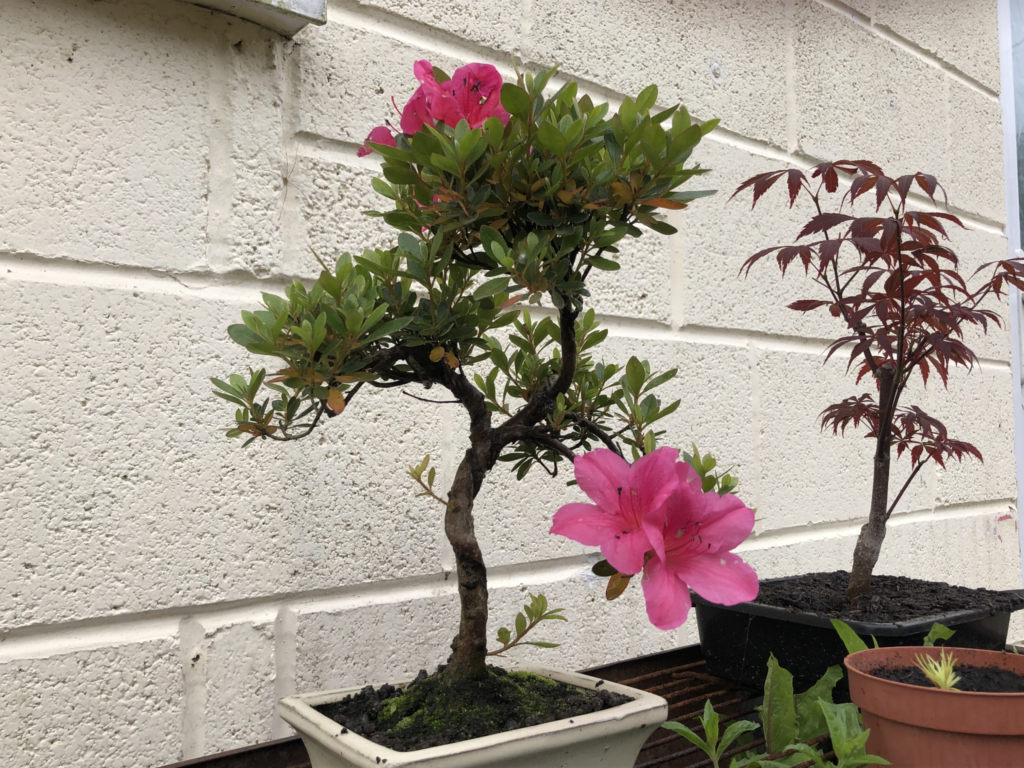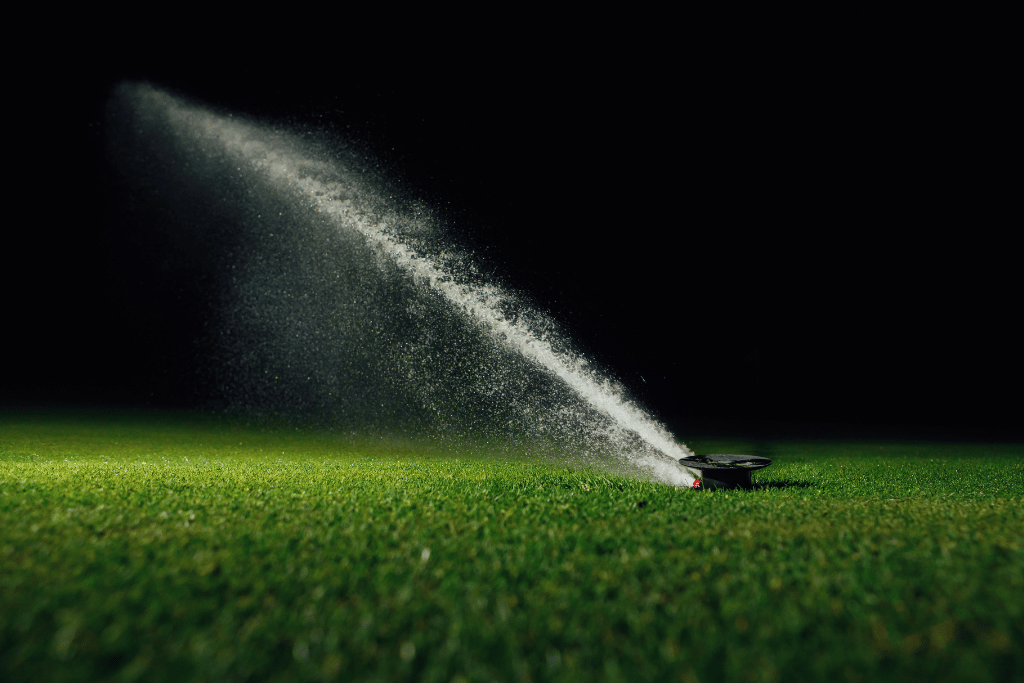Bonsai is a hobby for the patient. Growing bonsai isn’t something you can do in a weekend, a month or, most likely, a year. Developing good bonsai can take around ten years, depending on the material. You must go through years of watering, feeding, pruning, and repotting to get something quite lovely. So – how long does it take to grow a bonsai tree? Well, the answer is that it depends.
Starting Off
Most beginners will start with a ‘bonsai tree seed kit’, which is inaccurate. There is no such thing as a ‘bonsai seed’. ‘Bonsai’ is just a term for a tree that is potted in a container, usually regularly pruned and repotted. Any tree can generally be turned into a bonsai if it has the correct growth habits. Don’t worry, though – because I bought one of them myself!

Unfortunately, the pine on the left did not survive; however, the alder on the right did. You might wonder, ‘how long does it take to grow a bonsai tree from seed?’. Well, a year and a few months on, it’s grown into this massive beast – simply by growing it in a pot for a bit and then transferring it into the ground. If I keep it in the ground for a few more years to thicken the trunk, I could start developing its branch structure in a few years.

Some beginners will opt for older material or a fully developed bonsai tree (even though this can be pretty expensive). I started the hobby with a little maple which I bought from a local garden centre for the low price of £20. It’s developed quite well so far, but it needs around ten more years until I can get something really good out of it.

I wouldn’t spend ridiculous amounts on a bonsai tree at first unless you are pretty well versed at taking care of them, as some species can be quite fussy, and you may lose it quickly. Some garden centres or bonsai nurseries will also oversell their material quite a lot, so make sure you research alternative options before deciding on one.
Can they grow any faster?
In a way, yes. If you are ensuring that you are meeting their demands of watering, pruning, light requirements, temperature, etc. – then your bonsai tree will grow quite fast. You can also feed trees heavily to encourage more growth. However, you should beware of over fertilising them as this can burn their roots, which can lead to death and you asking the question of how long does it take to grow a bonsai tree again?
Some trees will also grow faster, while others may grow slower. For example, some faster-growing species of trees include species such as Chinese elms and Maples. Some slower-growing species include cedar, hemlock and spruce. So if you’re looking for results quickly, invest in a faster-growing species. For a beginner, I recommend a Chinese elm.
Although, instead of looking for quick development and over-pruning your bonsai tree, I recommend taking it slow to ensure it survives. Here are some valuable tips to ensure that it thrives!
Cut Away!
Understandably, many beginners are concerned about pruning their trees too much. However, I’m here to tell you that pruning is excellent for a tree. You should take only some of the foliage off; however, you should be pruning your tree back every year and letting it go wild some years to encourage growth!
Pruning also encourages growth, which is a handy tool for developing bonsai.Understand the needs of your tree
Do your research! I can’t stress this enough. You need to make sure that you look into what specific conditions your tree species likes – this will help you tremendously to keep it alive. There is a lot of good advice on the internet and this website, so make sure you do your research.
For example, some species, such as junipers, love full sun and can tolerate it, while some species, like azaleas, can be a bit more delicate and require shade.Don’t Repot Immediately
I’m guilty of this. The first tree I bought (the maple) was repotted the same day I got it. This was in the middle of the summer. This was also one of the worst mistakes I’ve made. Unfortunately, this mistake led to the demise of one of my favourite azaleas.

Unfortunately, regardless of the season, you can’t just repot your tree willy-nilly. Most repots are done in spring when the tree is about to start putting on growth again, which gives the tree enough time to recover. However, some species will favour different repotting times.
Most beginners want to start work immediately on their tree – repotting isn’t an excellent way to do this. It isn’t. Unless the tree is extremely root bound or in absolutely terrible soil, I recommend holding off on repotting the tree until the correct time.
When you end up repotting, you should be very careful about approaching it. The roots of trees can be pretty delicate, and you need to treat them with care. You should only take off small amounts at a time – instead, you should work them down over the years if you plan on keeping them smaller. Otherwise, you can loosen the roots and repot them into a larger pot.
Feed It!
If you can feed yourself, you can feed that bonsai tree. Many people aren’t familiar with fertilising plants – but it’s crucial in the art of bonsai. If you think about it, you’ve taken a plant that would typically grow quite large, with a massive root spread, and put it into a small pot.
In that small pot, the only way the tree is going to get nutrients is from you. This is why you need to provide it with fertiliser – it’ll encourage growth, harden it for winter, improve root health, and promote the formation of flowers and fruit.
Fertiliser is either chemical or organic, and I prefer chemical fertiliser. I’ve used organic fertiliser before, and in my experience, it has stayed on the surface and made the soil medium quite thick and dirty.
However, people have their preferences. Many famous brands are out there, such as Naruko and Biogold. However, ordinary plant fertilisers such as Miracle-Gro will also work fine for bonsai.
You should, however, pay attention to the NPK (Nitrogen, Phosphorous, Potassium) ratios. These are important, especially as you go through the seasons. Nitrogen is essential in encouraging the growth of trees, while phosphorous is used to form new roots and promote seed development. Potassium is used to transport water and nutrients around the plant – which is vital for survival.
A lower NPK ratio as you go into autumn is preferred, and you should eventually stop feeding the bonsai tree as you enter winter. Otherwise, any new growth will be killed off by the cold.
Use the correct soil
Many people believe that using ordinary garden compost is the best thing for their bonsai. In some cases, such as when you’re simply keeping it in the same pot for a few years, and you’re not too bothered about it, this is the case. Garden compost won’t kill your plant, but it might affect its health, especially if it’s pretty heavy and water retentive. This can lead to oxygen starvation in the roots if it gets waterlogged.
Believe it or not, there are unique soil mediums for bonsai. One such is Akadama. Akadama is a granular, clay-like mineral that is used in the majority of bonsai due to its good characteristics. It drains well and can be used for any species. Other soils include Kanuma, pumice, lava rock, and grit. However, there are many more depending on the use.
If your tree is potted in compost, I recommend making sure that you don’t waterlog it. You can do this by sticking your finger about an inch deep into the soil – if it’s still wet, you should hold off on watering. Ideally, it would be best if you watered the tree when the soil is slightly starting to dry out. Don’t let the soil dry out entirely, though; otherwise, the roots will desiccate and die.
How Long Will My Bonsai Live?
So we’ve discussed how long it takes for a bonsai tree to grow – however, how long do bonsai trees live? It’ll depend on the species of the tree and the care you give it. Some species of trees will live for a lot longer than others, such as pines. If you neglect the care of your tree, this will take years off your tree. You can find more information about how long your bonsai will live in this helpful article, in which I discuss which bonsai live for the longest and how to increase their lifespan.
Frequently Asked Questions (FAQ)
What is the easiest bonsai tree to care for?
In my experience, Chinese elm has been the easiest tree to care for. A lot of people agree on ficus. However, I have not had much experience with them, but they are pretty easy to grow. Chinese elm does very well in England’s climate, and they are extremely vigorous. I’m pretty sure they even grow in winter, which goes to show how well they do.
What is the most challenging bonsai tree to care for?
So you like a challenge? Well, it’s hard to determine what the ‘hardest’ tree to care for is. Do you mean developing it to become a bonsai or keeping it maintained as a bonsai? Either way, the species I have struggled with the most is junipers.
This is probably an unpopular opinion, but I can’t get the hang of them. Wiring and working with them, in general, is quite tricky, especially as I primarily work with trees with true leaves instead of needles. However, the answer is that you will learn which trees you prefer working on and which you hate as you go along.
What is the oldest bonsai tree?
The oldest bonsai tree is a ficus bonsai tree in Crespi, Italy. It’s over 1000 years old! They must’ve had quite a bit of patience…
Where can I find material for Bonsai?
Surprisingly, material for Bonsai is everywhere around you. Seeds, saplings, and nursery stock are all great materials to work with. I love going to garden centres and looking for stock with good potential – thick trunks and interesting features. Many of my trees come from ordinary garden centres – not specialised bonsai nurseries. Usually, they’ll be a lot cheaper for more. However, you won’t find a selection of species of trees as significant, and the quality might be a bit worse.
So, how long does it take to grow a bonsai tree?
In summary, it depends on the material. Starting from seed can take around 15-20 years; however, starting from more advanced material may only take 10 or 5, depending on how good the material is. I enjoy creating trees from seeds and cuttings as I enjoy propagation and have the patience to do so. However, you may prefer something other than slightly older material.



